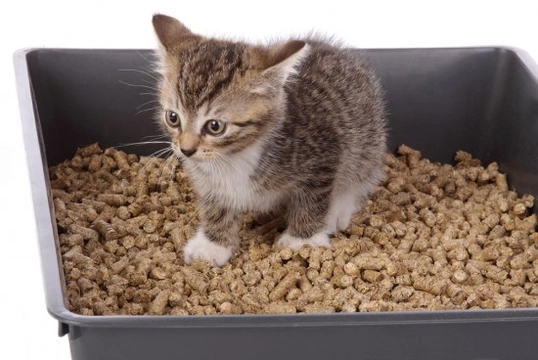
Share:
Litter Training Your Kitten
Bringing a new kitten home is an exciting time for you but it can also be a stressful time for the kitten. A new family, new environment, new smells, sights and sounds - the experience may be overwhelming for it! Luckily, one area which does not usually present too much of a problem is litter training your kitten. Cats are naturally fastidious and clean animals, and the kittens mother will have already done some of the work for you teaching and instructing her little one what to do. Of course in her new home, your kitten may need some pointers as to what to do, so here are a few hints to help you and your kitten get to grips quickly with litter training.
- Make the transition into a new home as stress free as possible. Make sure you have all the equipment you need for this task - a good sized litter tray, a variety of litter to try, newspapers or tray liners, pet friendly disinfectant and throwaway cloths. The litter your kitten prefers will purely be down to trial and error, but cats usually do have a preference. In the case of kittens, it is probably best to try a straightforward, unscented clay based material first. In addition, it is a good idea to remove pot plants from areas easily accessible to your kitten. They may find the earth or soil in the pot to tempting to ignore and it is important that the only place they get used to going to the toilet is in the litter tray.
- Place the litter tray in a quite position, away from its food bowls, where it can go about its business undisturbed. Kittens tend to like places behind furniture but make sure the location is convenient for you to get to clean it up. Over time, as the kitten gets used to using it, you can move it to the location of your choice.
- When you finally bring your kitten home, make sure that you have the tray ready prepared in the spot you have chosen. Gently place the kitten in the tray and you will probably notice her sniffing and maybe pawing at the litter. This is instinctual in most kittens and cats but it is important that you help her along. Take her to the tray after each meal or you see her drinking. You may need to place her into the tray over 10 times a day to make sure she gets the idea! In addition, kittens will sometime exhibit signs or certain behaviours when they 'need to go'. From mewing to wandering to scratching the floor, carefully observe her and if necessary gently guide her to the litter tray spot, then give her privacy to do her business.
- Make sure the tray is kept clean. You can skip out the majority of the waste with poop scoop bags, but the tray will need to be changed completely at least once a day. When you clean the tray, it is a good idea to wipe over the entire tray with a pet friendly disinfectant and disposable paper wipes. Cats like their toilet area to be as clean as possible, so it is essential you do your bit to encourage her to use the litter tray and not your floor.
- In the case that there are any accidents, do not get angry with your kitten - by doing do you will scare her and make her more likely to hide away from you when she needs to use the toilet. Depending on your flooring or upholstery, if you need to clean it, follow the manufacturer's instructions at all times to prevent damage.
- If you notice any changes to stools or habits once they are established, it may be worth seeking veterinary advice if you are unsure as to what may have caused it. Some underlying medical issues can cause changes to established toilet patterns.
- Be patient and consistent! Litter training your kitten is likely to take around 4 weeks but once she has mastered it there are rarely further problems.



